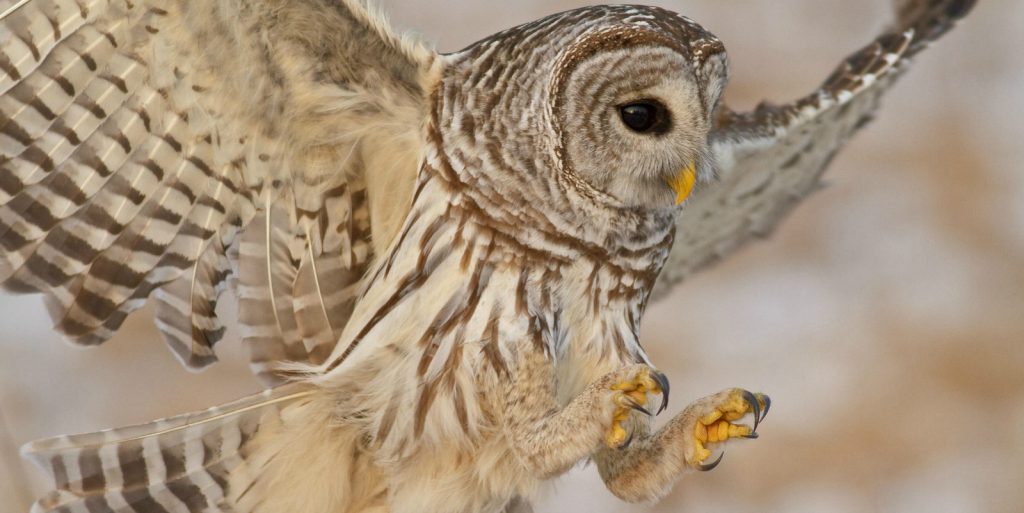by Doug Becker
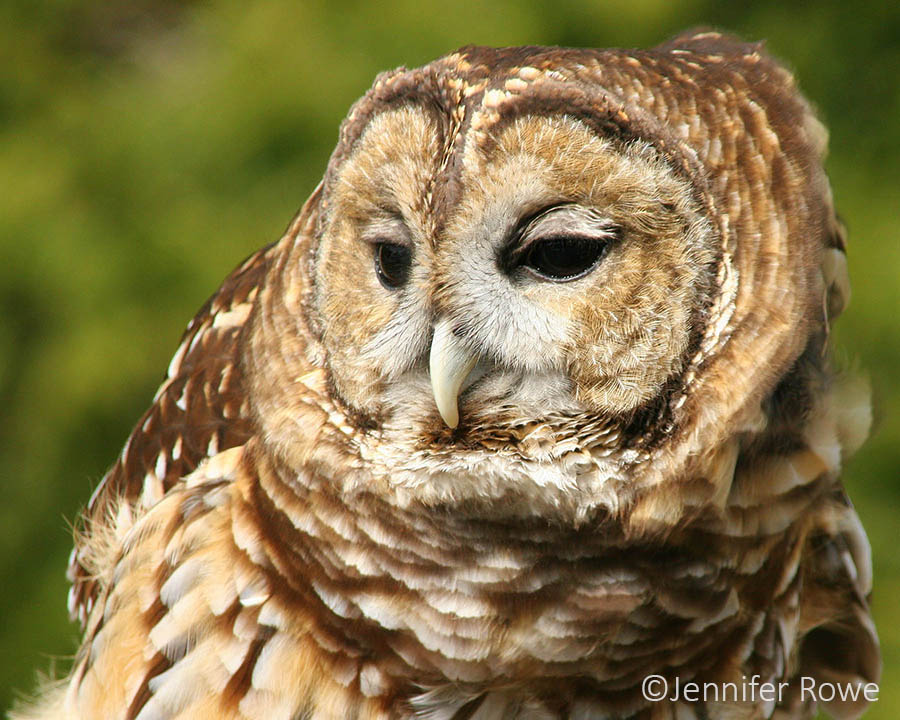
There are some 40 species of owls in the United States. Most of these dramatic forest birds are barely noticed, but there are some owls that should be on every birder’s “must have” list. Do you have the Northern Barred Owl on your list? This big owl heavily populates the entire eastern half of the U.S., then west through southern Canada, and into Washington, Oregon, and northern California. The western regions are new to the Barred Owl as their population has expanded to over 3,000,000. The Barred Owl is among the few bird species that are maintaining and increasing in numbers.

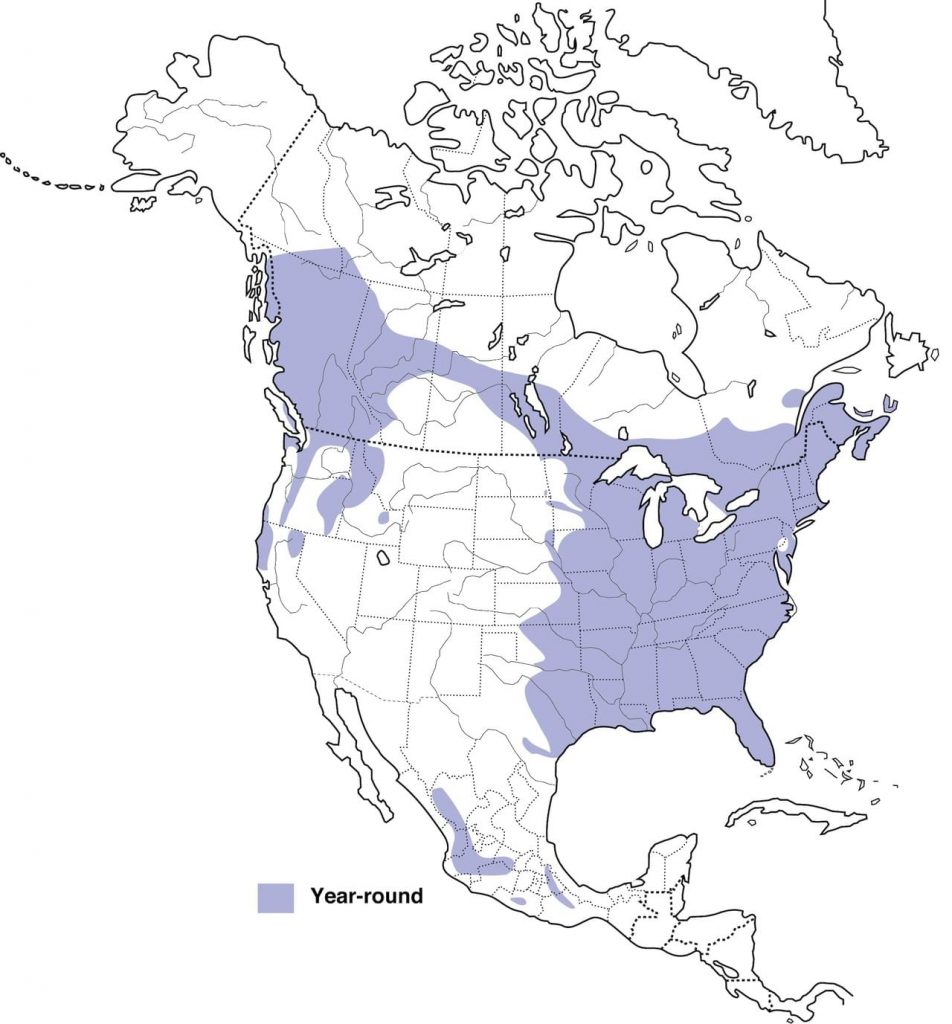
Northern Barred Owls are just a little smaller than Great Horned Owls. Their length is 17-20 inches, and wingspan is 39-43 inches. Barred Owls are mottled brown and white all over and blend in perfectly with tree bark. Specifically, their upper-breast is horizontally streaked with small, brown bars, and the underparts have large, brown vertical bars. So, now we know how Barred Owls got their name. Their wings and back are dark brown with white checks, and their head is round with no ear tufts. Best of all, and a quick aid for identification are the Barred Owl’s big dark-brown eyes. From a distance, they look black and a little spooky. Most owls have large yellow eyes and a dark beak. Barred Owls have the opposite, dark eyes and a yellow beak.
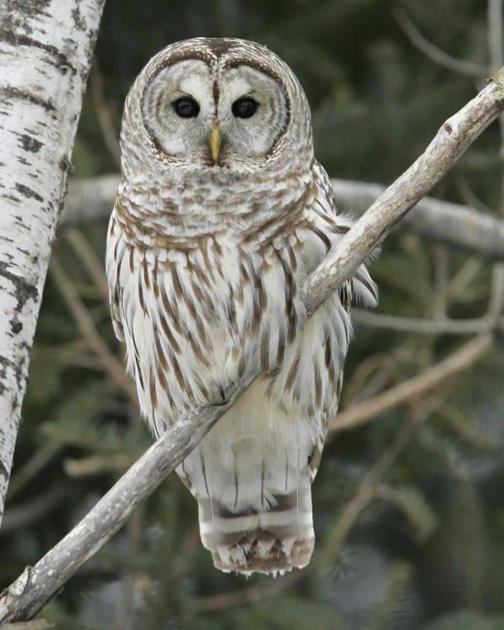
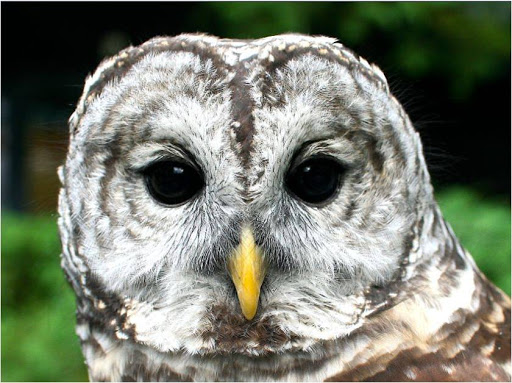
Seeing and identifying owls is usually by chance and with a lot of luck. Within their range, Barred Owls are all around us. In daylight they’re nearly impossible to see as they are well-camouflaged within the trees. At night, however, the Barred Owls are very active in silent flight, hunting for prey. This is the time we hear their familiar call that sounds like, “Who cooks for you? Who cooks for you-all”? These calls are frequent and become loud when a number of Barred Owls call back and forth. Sometimes these calls sound like dogs barking in the distance. This will happen in mature forests near water, in city parks, or even in treed backyards. By imitating their call, you may become part of their conversation. Better yet, you may get checked out by a curious, territorial Barred Owl. Even though these big and plentiful owls are hard to see, no one can miss their call.

Barred Owls nest only 20-40 feet high, and prefer a large cavity. Without a good cavity to nest in, they will make home in a stick platform nest built by hawks, crows, squirrels, or other large nest builders. Barred Owls make little, if any change to these abandoned nest sites other than adding lichen, some fresh green conifer sprigs, or a few feathers to the platform nests. If you have a treed yard, an owl box works really well. Owl boxes are not hard to build, but it’s even easier to simply order online and have it at your door the next day. Once Barred Owls find a secure nesting site and establish their territory, they seldom stray more than 5-6 miles from home. Considering Barred Owls live for about 24 years, and you have put up a nice owl box, you may have owls in your yard for some time to come! The Great Horned Owl is a major predator to Barred Owls. If a Great Horned moves into their territory, Barred Owls will move to the furthest part of their territory and will certainly keep a watchful eye out at night.


Barred Owls brood once per year with a clutch of 1-5 eggs. After 28-35 days of nesting, the little guys are ready to meet the world. As they grow, but before they take flight, the young can be seen “walking” up the tree. This is done by grabbing onto the tree bark with his bill, digging into the bark with his talons, and flapping his wings. An interesting, if not vulnerable spectacle!
Some people ask if Barred Owls are aggressive, and will they attack people? The answer is “no”. Well, maybe, but very seldom. Well, actually, owls of all kinds have been known to attack people when defending their young, mate, or territory. This is rare, but it happens. Victims are usually hikers and joggers. Great Horned Owls and Barred Owls are the usual culprits. These rare attacks have been recorded in various states, and in both city and country. Both birds will swoop down and aim their attack to the head and face of an unsuspecting passer-by. Most attacks are not serious, but there have been injuries. I remember several years ago when a neighborhood in Jacksonville, FL, was unable to use a sidewalk at night because they’d get swooped on by some big owl. Don’t worry, this is seldom! It’s more common to have a Barred Owl get stuck in your chimney.
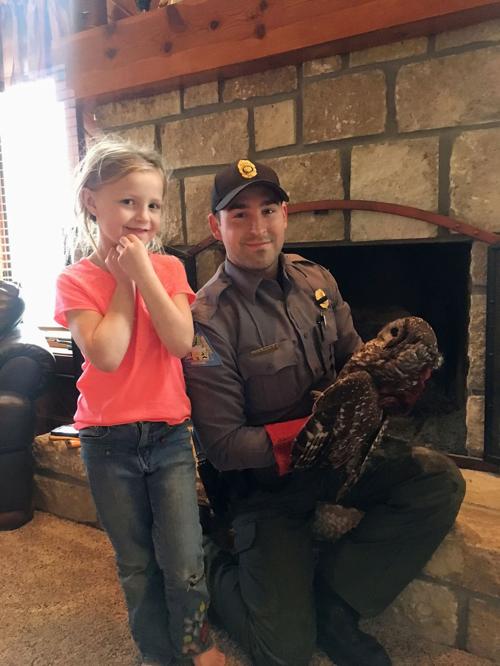
These big owls are all around, and they are exciting to hear just outside your door, and even more exciting to see. Grab your binocs, and I’ll see you out there.

“Barred Owls eat many kinds of small animals, including squirrels, chipmunks, mice, voles, rabbits, birds (up to the size of grouse), amphibians, reptiles, and invertebrates. They hunt by sitting and waiting on an elevated perch, while scanning all around for prey with their sharp eyes and ears. They may perch over water and drop down to catch fish, or even wade in shallow water in pursuit of fish and crayfish. Though they do most of their hunting right after sunset and during the night, sometimes they feed during the day.” All About Birds
